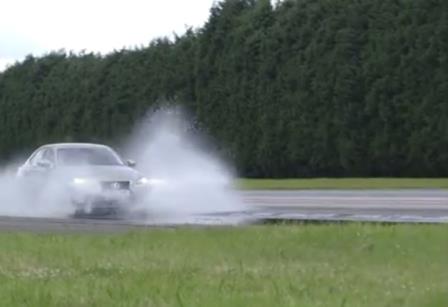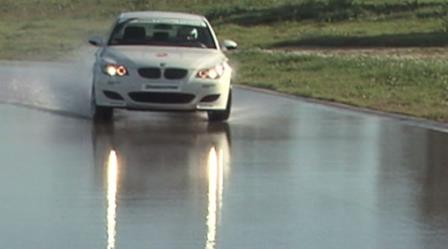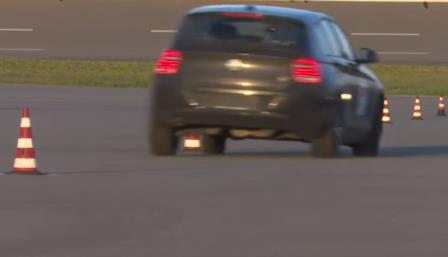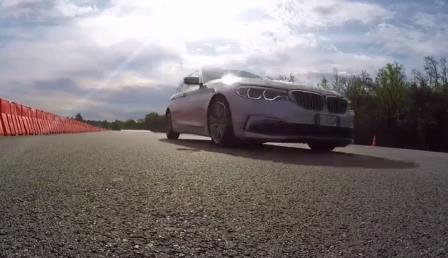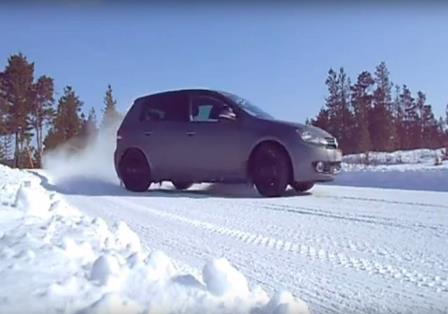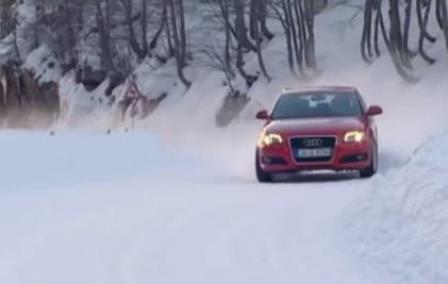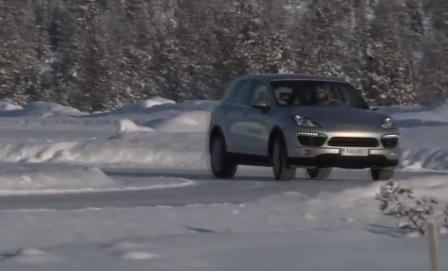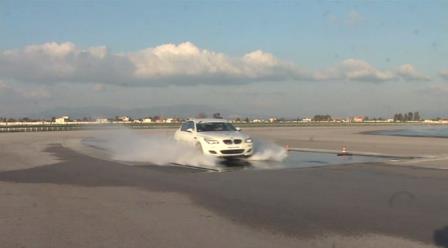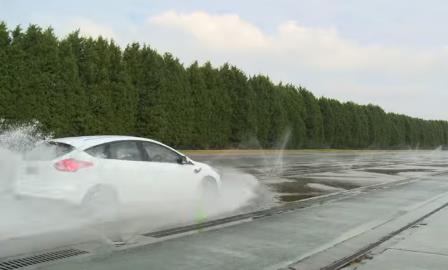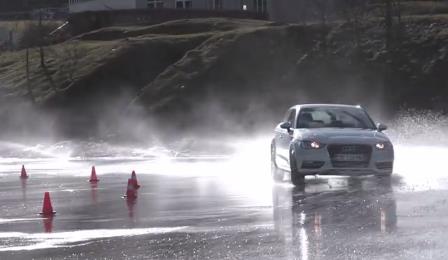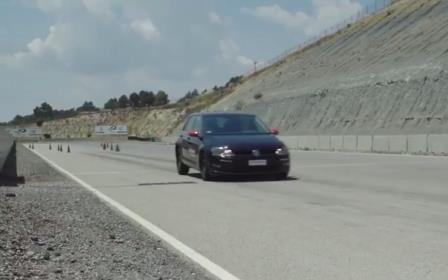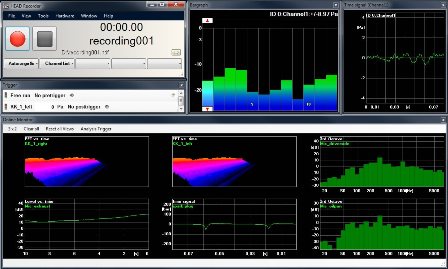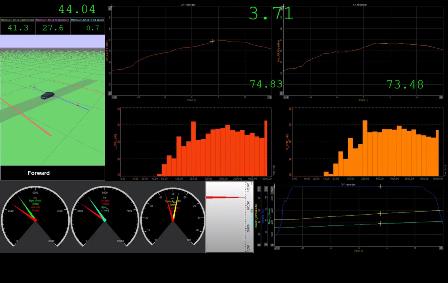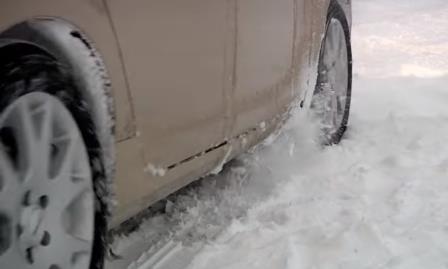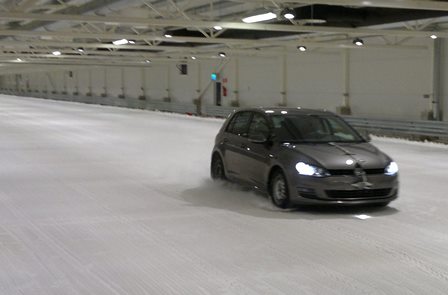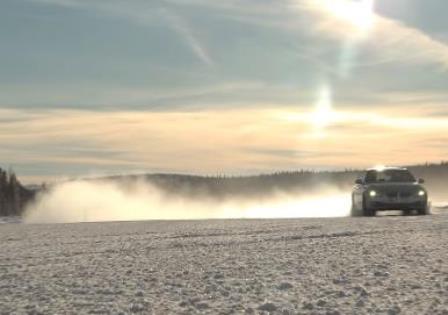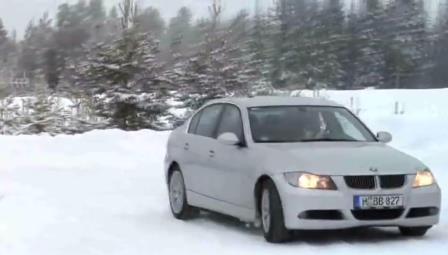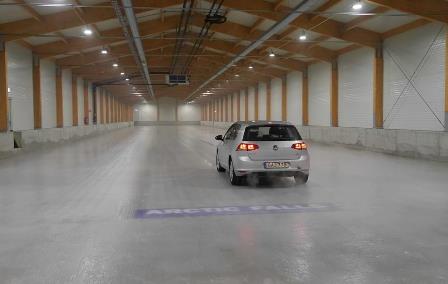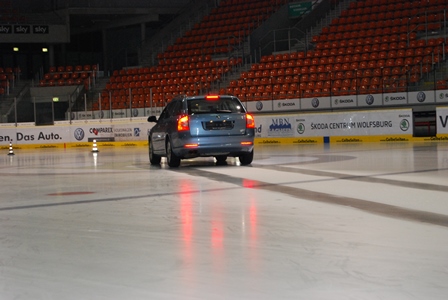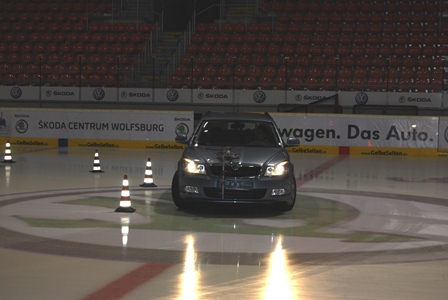The test is performed on a dedicated test track provided with a water trough adopting a hydraulic control system to ensure 4-10 mm water depth. One side of the vehicle is driven in the trough (typically the left side) while the opposite side is kept out from the water. The test vehicle is equipped with a GPS-based device equipped with wheel speed sensors. The car approaches the water trough entrance at a fixed speed and, once in the water, is fully accelerated. Hydroplaning measurement differs between FWD and RWD vehicles. For FWD the hydroplaning speed is reached when the front tire running in the water exceeds the slip threshold (typically 15%) at a predefined distance from the water trough entrance. The same front tire is measured in case of RWD but applying a negative slip threshold. The test starts with the control tire set to be re-tested at the end of the session in order to keep into consideration possible changes of the test conditions. The aquaplaning speed is measured 4 times for each tire set and the average value is used to calculate the overall result (expressed in %).
